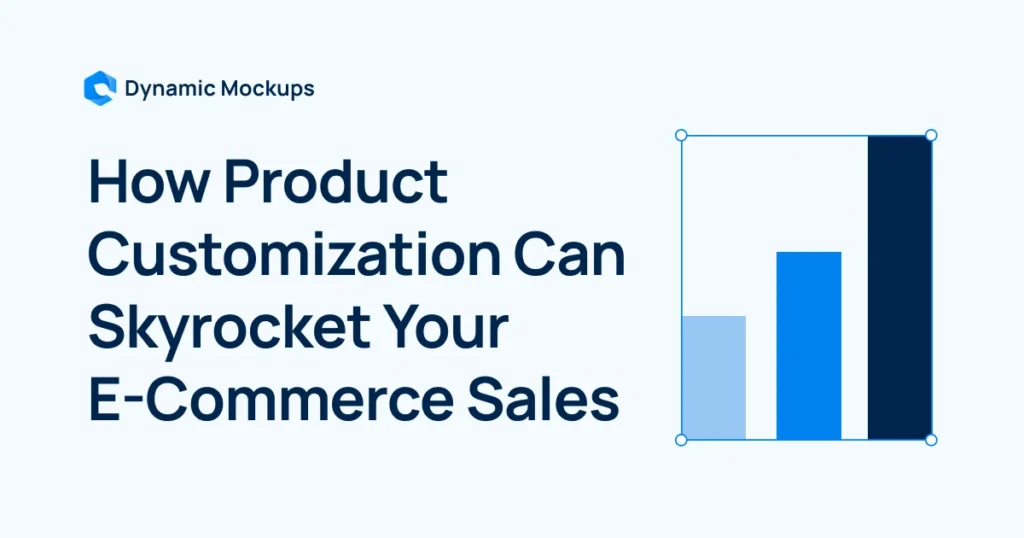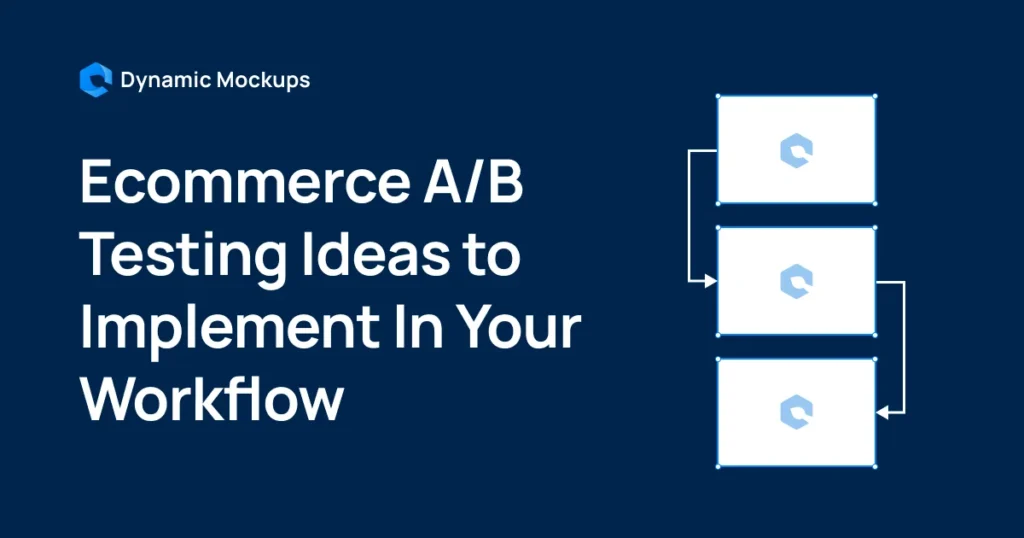Are you thinking about starting an eCommerce business?
It’s a tempting idea, and with low startup costs and the freedom to work from anywhere, the opportunities are bigger than ever.
However, to succeed, you’ll need more than a good product. You’ll need the right mindset, solid tools, and a plan to avoid mistakes that ruin sales, frustrate customers, and waste marketing budget.
In this article, we’ll cover the 15 most common eCommerce mistakes and how to avoid them!
15 Critical eCommerce Mistakes and How to Avoid Them
1. Failing to Define Your Target Audience
One of the most common mistakes among beginners in eCommerce.
Instead of resonating with potential buyers, your messaging becomes too broad and diluted to make a real connection.
Most importantly, without a clear understanding of who your customer really is, you can’t effectively solve their problems, anticipate their needs, or build meaningful, long-term loyalty.
Solution
To avoid not resonating with the right people, you should:
- Research deeply – Research both demographics (age, gender, income, location) and psychographics (interests, values, habits) using tools like Google Analytics, Meta Audience Insights, or surveys.
- Create customer personas – Build detailed profiles of your ideal buyers to guide your messaging. Free templates from HubSpot or Xtensio can help.
- Focus your niche – The more specific your target, the easier it is to stand out. For example, target “eco-conscious yoga beginners” instead of just “yoga enthusiasts.”
- Address real pain points – Learn what your audience struggles with by reading product reviews, Reddit threads, or Amazon Q&As in your niche.
- Align your brand with their values – Join communities like Facebook groups, subreddits (e.g., r/ZeroWaste or r/Fitness), and Instagram pages where your audience spends time.
2. Picking the Wrong eCommerce Platform
Choosing the right eCommerce platform is one of the most important decisions you’ll make when launching your online store. Get it wrong, and you could run into serious problems before you’ve even made your first sale. These problems include:
- Site performance issues, such as crashes or slow load times, can occur during high traffic.
- Missing essential features or poor integration with tools you need (payments, inventory, marketing).
- Limited scalability, making it hard to grow without switching platforms later.
- High costs or technical complexity, especially if the platform requires constant developer support.
For example, imagine your site crashing on Christmas Eve or during a major promotion, and how much that could impact your revenue.
Costco’s site once went down for over 16 hours on a peak shopping day, resulting in an estimated $11 million in lost sales.
Solution
To avoid ending up with a platform that doesn’t work for you, take time to research. Try out demos or free trials to get a feel for what works best. For example:
- If you’re just starting out, Shopify and WooCommerce are great, user-friendly choices with plenty of plugins and support.
- If you’re growing fast or managing a large catalog, consider BigCommerce, Magento, or a custom build for more power and flexibility.
Below is a list of the best eCommerce platforms to try:
| Platform Name | Best for |
| Shopify | Highly popular for its ease of use, scalability, extensive app ecosystem, and strong multi-channel selling features. Suitable for beginners and large businesses alike. |
| Wix | Known for its drag-and-drop builder, customizable templates, and user-friendly design, making it ideal for small to medium-sized businesses. |
| BigCommerce | Offers robust built-in features, scalability, and multi-storefront management. Great for businesses aiming to grow or manage multiple brands. |
| Adobe Commerce (Magento) | A powerful, open-source solution favored by enterprises for its extensive customization and integration capabilities, especially for complex or large-scale operations. |
| WooCommerce | A flexible, open-source WordPress plugin that allows for deep customization and control, ideal for those already using WordPress. |
| Squarespace | Combines beautiful design templates with eCommerce functionality, best suited for creatives and small businesses wanting visually appealing stores. |
| Big Cartel | Targets artists and makers with simple, affordable tools for selling online, especially for those with smaller product catalogs. |
3. Poor Website Design & Navigation
Did you know that 94% of people form an opinion on a site based on its design in just 0.5 seconds, and 38% will leave immediately if it looks poor?
A bad design and poor user experience signal a lack of professionalism and make people question your brand’s credibility.
So, if your site feels outdated, cluttered, or hard to use, visitors will bounce, often to competitors.
For example, Zara has faced criticism for a confusing website design that hid the product menu behind a small icon and left much of the homepage empty.
As a result, first-time visitors saw little product information and struggled to navigate the site.

Solution
To ensure your website looks appealing, follow these tips:
- Make browsing easy by prioritizing a user-friendly design.
- Use clear menus and intuitive search functionality.
- Organize products into logical, easy-to-navigate categories.
- Ensure key pages (Home, Shop, Cart, Contact) are easy to find and access.
- Use high-quality images that reflect your products accurately.
💡Pro Tip
You can embed a professional mockup editor directly into your website with the Dynamic Mockups iFrame tool to offer a seamless and professional mockup editing experience.
This allows users to customize their products without ever leaving your platform.
Here is what it does:
- Minimizes errors and inefficiencies – Reduces data transfers and printing mistakes for a smoother workflow.
- Enhances speed and productivity – Optimizes efficiency while supporting a more sustainable design process.
- Ensures flawless print quality – Enables precise, high-resolution designs directly within your platform.
4. Ignoring Mobile Optimization
People are constantly scrolling on their phones, in bed, on the train, or in line at the coffee shop. That’s where they discover products, compare prices, and make purchases. In fact, mobile now drives over 70% of all eCommerce traffic.
So if your site isn’t optimized for mobile, you’re basically closing the door on most of your potential customers.
If it’s slow, hard to navigate, or forces users to pinch and zoom, they’re gone, as no one has the patience to wrestle with a clunky site on their phone.
Solution
To make your mobile visitors engaged and prevent unnecessary drop-offs, follow these tips:
- Use responsive design so your layout automatically adapts to any screen size without breaking or requiring manual zooming.
- Make text readable without zooming and ensure buttons/links are large enough to tap easily.
- Optimize images to load fast on mobile networks. Use modern formats (like WebP), compress file sizes, and make sure visuals scale correctly on smaller screens.
- Keep navigation simple with collapsible menus (hamburger style), intuitive categories, and a prominently placed search bar so users can find what they need quickly.
5. Weak Product Descriptions and Images
In a store, shoppers can touch, try on, or closely inspect a product. Online, your product descriptions and images have to do all that work.
Too often, sellers rely on one-line descriptions or copy straight from the manufacturer, assuming customers already know what the product is. But vague or uninspiring descriptions make buyers hesitate.
The same goes for images. Blurry photos, lack of angles, or just one image can make your product feel cheap or risky. In fact, nearly 30% of cart abandonments are due to inadequate product visuals.
Here is an example of a good product description:
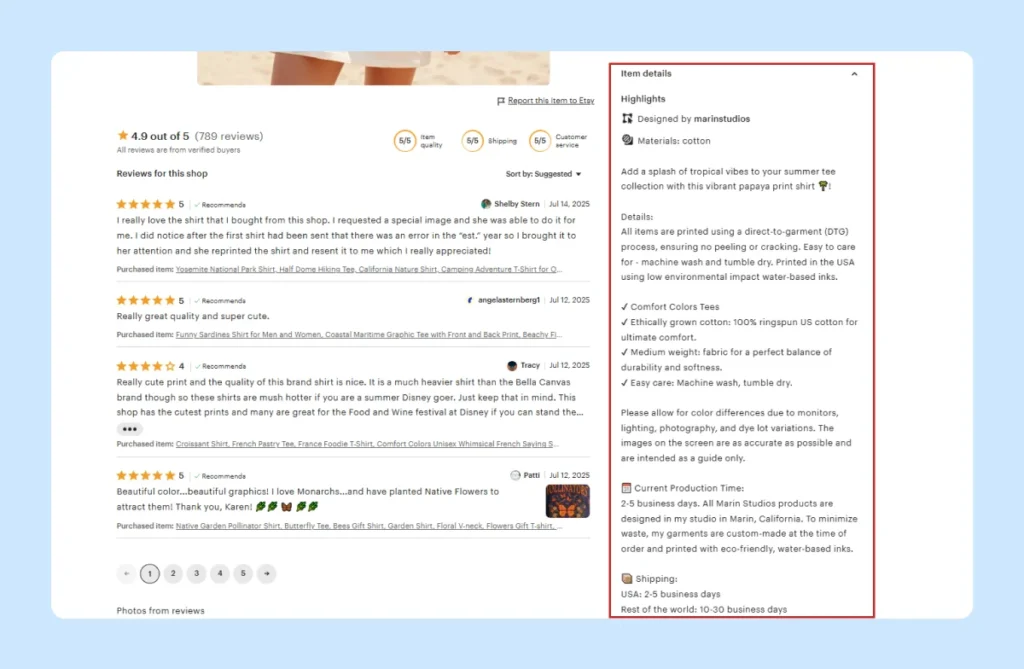
Solution
To make your products more appealing, informative, and trustworthy to online shoppers, focus on these elements:
- Write clear, engaging descriptions that show benefits. Instead of “5000mAh battery,” say “Lasts all day on a single charge, ideal for travelers and remote workers.”
- Include key information like size, materials, weight, dimensions, compatibility, care instructions, or warranty details.
- Show the product from at least 4–5 angles. For optimal quality, aim for a resolution of at least 1000 x 1000 pixels, with 2000 pixels or more on the longest side if you want to enable zoom functionality.
- Stick to image formats like JPEG or WebP to ensure faster loading without compromising clarity.
- Add lifestyle shots to help customers picture the product in real life.
💡 Pro Tip
With the Dynamic Mockups Bulk Mockup Generator, you can create up to 100 high-quality product mockups in just 10 seconds.
It is perfect for testing your designs across multiple styles, colors, and angles without spending hours on manual edits.
These crisp, consistent images present your product in the best possible light, helping to build trust at first glance.
Additionally, you can showcase your products in real-world settings using our AI Mockup Generator. In just a few clicks, generate polished scenes without altering your original design. Simply describe the background you want, fine-tune with the Negative Prompt, and let the AI do the rest.
6. Skipping a Marketing Plan and Promotion Strategy
Another classic eCommerce blunder is the “build it and they will come” mentality.
You might have the best website and products in the world, but if nobody knows you exist, you won’t make a single sale.
Many new store owners underestimate the need for a robust marketing plan – they launch their site and just hope for traffic to magically appear.
In fact, 37% of failed eCommerce businesses attributed their downfall to “poor online marketing,” and 35% cited “lack of online search visibility” as a key reason.
Solution
To create an effective marketing campaign, follow these steps:
- Choose 1–2 main traffic sources (like Instagram + SEO) based on where your ideal customers spend time, and build your launch strategy around them.
- Set a monthly ad budget (even $100) and split it across targeted platforms like Google Ads and Meta Ads to test what actually brings traffic and sales.
- Start collecting emails from day one and set up automated flows like welcome emails and cart reminders to convert visitors into customers.
- Create and share one piece of helpful content each week (blog, video, or social post) that answers your audience’s questions and builds long-term traffic.
- Review your marketing data every 2–4 weeks, double down on what works best, and cut what doesn’t to continually improve performance.
- Use simple marketing tools to automate repeat tasks like scheduling posts, tracking leads, and testing what content or ads perform best.
7. Ignoring Search Engine Optimization (SEO)
If your store doesn’t show up in search results, most people will never find it. That means missed traffic, missed sales, and long-term stagnation.
In fact, over 90% of websites never receive meaningful traffic from Google. Why? Because they skip SEO!
While it might seem complex at first, skipping it means missing out on traffic and falling behind competitors.
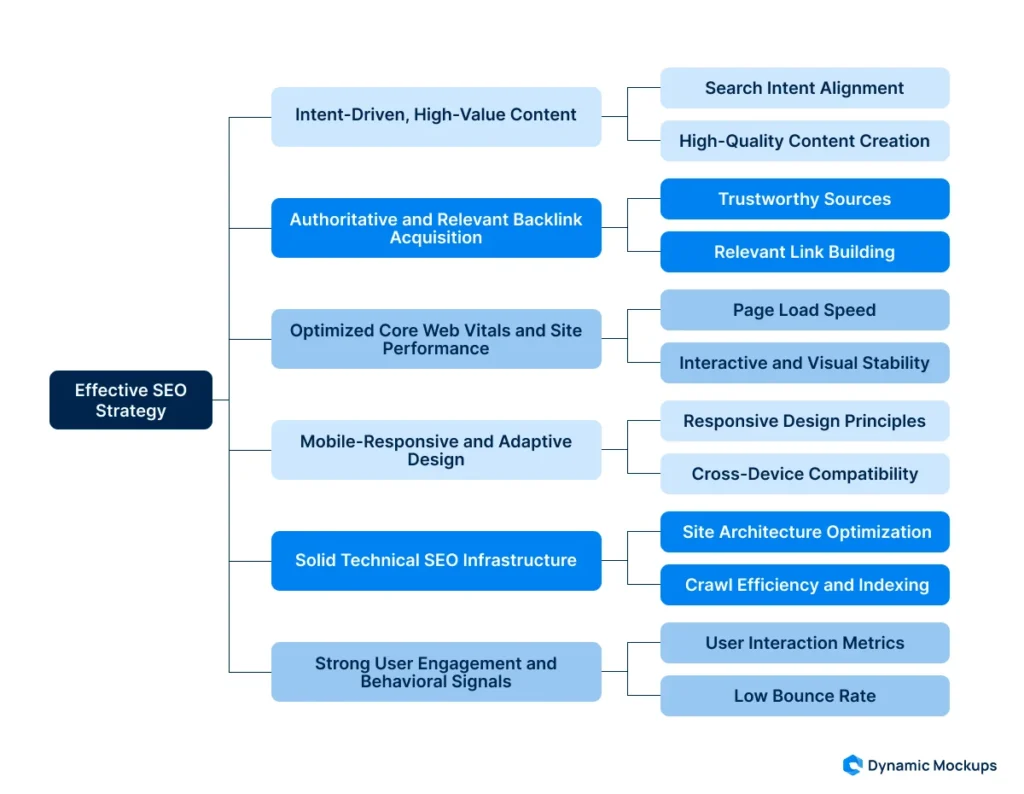
Solution
To make your store visible in search engines and bring in long-term organic traffic, focus on these basics:
- Do keyword research – Use free tools like Google Keyword Planner or Ubersuggest to find what people search for when looking for products like yours.
- Optimize your pages – Use target keywords naturally in product titles, descriptions, categories, and blog content.
- Improve your site structure – Use logical navigation, clean URLs, and internal linking so search bots (and humans) can easily explore your site.
- Write strong meta tags – Each page should have a clear, relevant meta title and description to encourage clicks from search results.
- Build backlinks – Get your store mentioned on blogs or niche websites through guest posts, reviews, or partnerships to boost your site’s authority. Building backlinks is essential.
8. Neglecting Data Analysis and Customer Insights
Every click, scroll, product view, and abandoned cart tells you something about your customers: what they like, where they struggle, and why they buy (or don’t).
Without tracking and analyzing this data, you’re essentially making decisions based on gut feeling instead of real evidence.
This often leads to wasted ad spend, poor product decisions, and low conversion rates.
Solution
Turn data into decisions by:
- Installing analytics tools – Google Analytics (GA4), Hotjar, or your platform’s built-in dashboard are great places to start. They help you track user behavior, traffic sources, and conversions.
- Monitoring key metrics – Pay close attention to numbers like conversion rates, bounce rates, average order value (AOV), customer acquisition cost (CAC), and customer lifetime value (CLV). These will give you a clear picture of your store’s performance.
- Analyzing behavior – Use funnel tracking to identify where people drop off during their shopping journey, and session recordings or heatmaps to see what users are doing on your site.
- Running tests – Use A/B testing to try different product images, headlines, CTAs, or checkout layouts. Small changes, backed by data, can lead to significant improvements in conversion rates.
9. Providing Subpar Customer Service
You might think that once a customer clicks “Buy”, your job is done, but in truth, it’s just beginning.
Providing great service after the sale is what turns first-time buyers into loyal customers and brand advocates. On the flip side, poor follow-up can lead to returns, negative reviews, and broken trust.
In fact, 79% of consumers say they may not buy again after a poor post-purchase experience.
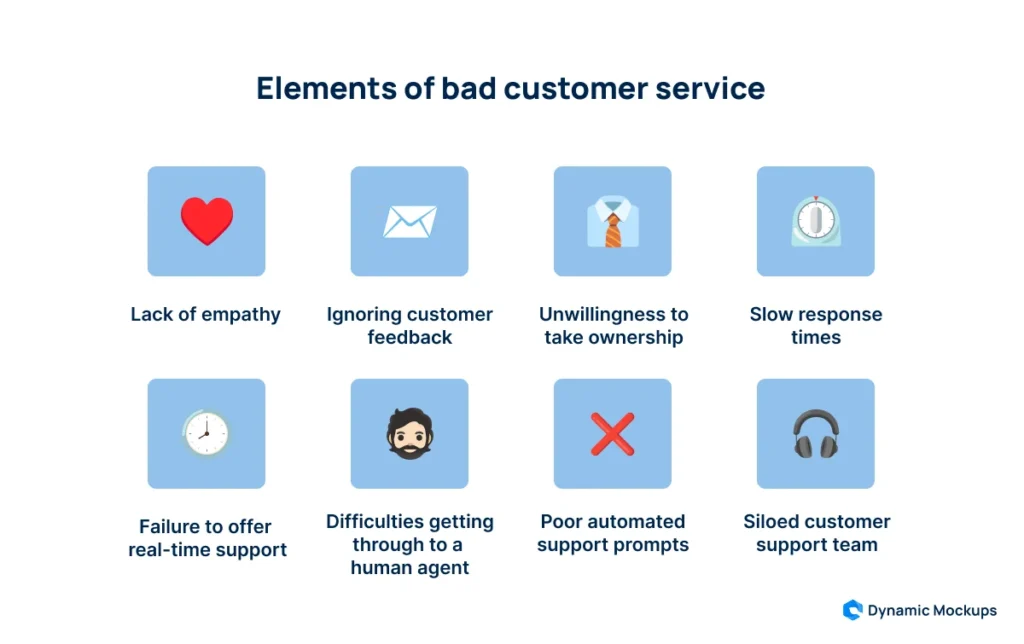
Solution
To avoid this common mistake, make customer support a core part of your business:
- Offer multiple contact channels – Live chat, email, and clear contact info should be easy to find. Aim to reply to inquiries within 24 hours or less.
- Be helpful – Train your team (or yourself) to handle issues with empathy and clear communication.
- Use automation smartly – Tools like AI chatbots can handle FAQs instantly and free up time for real problems.
- Share info proactively – Clear return policies, order status updates, and a detailed FAQ page can reduce confusion and increase satisfaction.
10. Complicating the Checkout Process
You’ve already convinced the customer to buy, don’t lose them at the final step with a clunky or frustrating checkout.
One of the biggest conversion killers is forcing account creation or asking for too much information. In fact, studies show that around 1 in 4 shoppers abandon their cart if they’re required to register.
Solution
To reduce checkout friction and improve conversions:
- Allow guest checkout – Don’t require account creation. Offer to save their info after purchase instead.
- Only ask for essentials – Keep form fields to the minimum required (shipping, email, payment).
- Use clear steps – If your checkout has multiple pages, show progress indicators (like “Step 2 of 3”).
- Display trust signals – Show secure payment badges, return policy notes, and customer support contact in checkout to build confidence.
Bonus 5 eCommerce Mistakes to Keep an Eye On
Here are some additional mistakes to keep in mind:
| Mistake | Why it happens | Solution |
| 11. Limited payment options | If you don’t offer enough payment methods, people won’t be able to complete their purchase. | Accept all major cards, add PayPal and Apple/Google Pay, offer buy-now-pay-later options like Klarna or Afterpay, include region-specific methods, and display trust symbols during checkout. |
| 12. Limited shipping options & unclear return policies | When shipping is too slow, expensive, or unclear, or return policies are vague, people hesitate to buy. | Offer multiple shipping speeds, show delivery timelines and costs early. Set free shipping thresholds, clearly explain return policies, and make them easy to find. |
| 13. No social proof from customer reviews | If there are no reviews, people won’t trust the product or your store. | Ask customers for feedback after their purchase and encourage honest reviews by offering small incentives. Showcase star ratings, customer quotes, and user-generated content prominently on your product pages to build trust and engagement. |
| 14. Lack of trust and security signals | When your site doesn’t show clear signs of security and legitimacy, people won’t feel safe entering payment details. | Build trust by using an SSL certificate, displaying trust badges (like McAfee or SSL Secure), and showing recognizable payment logos. Make sure clear policies and contact information are easy to find, especially on key pages like the checkout. |
| 15. Not having a clear, unique selling proposition | No clear reason for shoppers to choose you over competitors. | Define and highlight your differentiator clearly, be specific, customer-focused, and memorable. |
Your Next Step: Ditch the Mistakes, Focus on What Works
Now that you’re aware of these common eCommerce mistakes, you can build a strategy that avoids the usual pitfalls and sets your store up for success from day one.
Keep in mind that while things like clear messaging, customer focus, and ongoing optimization are important, it’s strong product visuals that truly makes a difference.
That’s where Dynamic Mockups comes in, helping you create beautiful, realistic product mockups in seconds so your store earns trust and converts more customers.
How Can Dynamic Mockups Help You Launch an eCommerce Business
Trusted by over 3,000 top brands and platforms, including Shopify, Etsy, WooCommerce, and Amazon, this user-friendly automated mockup generator is designed to help POD and eCommerce businesses create high-quality visuals with ease.
Here are some of Dynamic Mockups’ features to help your store stand out:
✨ Mockup Library offers over 1,000 free templates, including T-shirts, hoodies, wall art, pillows, tote bags, mugs, phone cases, sweatshirts, and more, to help you visualize your design on real products.
✨ API Functionality
Create stunning Photoshop mockups with our powerful API! Just upload your designs, and our tool will generate high-quality mockups that flawlessly match your brand.
✨ Take your designs to the next level with Advanced Editing Tools that are both powerful and easy to use.
Choose from curated color palettes to find just the right shades, and bring your work to life with rich textures, depth, and Photoshop-style effects.
Best of all, the tool automatically resizes and positions your design for a perfect fit, every time.
✨ Design Library
Keep your creative work organized and at your fingertips. Effortlessly search, resize, move, and edit your designs with just a few clicks!
✨ Seamlessly integrate with eCommerce platforms like Etsy and WooCommerce.
Get started with Dynamic Mockups for free and give your eCommerce brand the professional edge it deserves!
Keep Learning
9 Common Mistakes New Etsy Sellers Make in 2025 [Avoidable]
7 Mistakes to Avoid When Designing Tote Bags for Your Brand [+Pro Tips]

